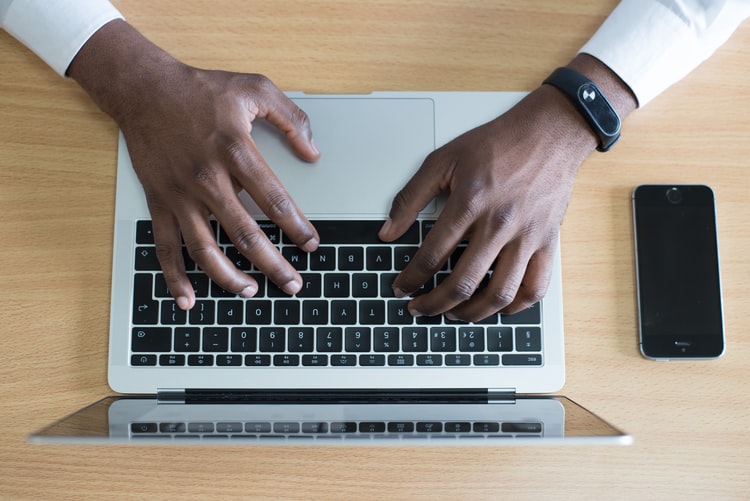Handling time efficiently is less about managing minutes and more about mastering a lifestyle, especially for students and digital nomads who juggle their independence with the need for productivity. These individuals often harness technological tools to streamline their tasks and manage their time more efficiently. For instance, using an essay bot generator online like Studybay, powered by machine learning, can help manage random quality in academic tasks, freeing up time for other priorities.
Here we investigate advanced but pragmatic techniques enhanced with real-world knowledge from experienced nomads who have made time their friend.
Mastering Time Zones: Navigating a Global Schedule
For digital nomads who must coordinate their work life with colleagues and clients worldwide, navigating several time zones is an inherent difficulty. The most recent statistics for 2025 indicate that there are around 40 million digital nomads globally, with approximately 18.1 million of them based in the United States.
This community typically values the ability to manage a flexible schedule, with 41% working full-time hours while enjoying the freedom to adjust their work around their lifestyle choices. The trend continues to be fueled by technologies and remote work infrastructures that allow for effective communication and productivity from anywhere in the world.
Many digital nomads say that one of their main difficulties is time zone management. This logistical challenge calls not just for adaptability but also strategic knowledge of worldwide business hours to keep communication and flow across countries.
Sarah, who lives intermittently between Bali and Berlin, has developed her own method for managing this: “I tailor my work hours to overlap with my team in New York. It’s odd working late into the night sometimes, but it frees up my mornings to enjoy the locales I’m in or work on personal projects.” This approach allows her to maintain productivity without sacrificing her personal time or well-being.
Strategy: Use digital tools like Google Calendar to manage your time across time zones. Setting up custom time zone displays for each location you work with can help you plan your day more effectively and ensure you’re always aligned with your global counterparts.
Rethinking Routine: Structure in Fluidity
While the nomadic lifestyle offers freedom, incorporating a structured routine can paradoxically enhance this freedom. Psychologically, establishing a routine can provide a sense of security and predictability in an otherwise uncertain environment.
This stability is crucial for mental health, as it reduces stress and increases focus, enabling nomads to navigate the uncertainties of constant travel with greater ease. By dedicating specific times for work, exercise, and relaxation, digital nomads can create a balanced life that supports sustained productivity and personal well-being.
Tom, who has navigated the nomadic lifestyle for over five years, finds stability in starting his day with a consistent routine. “No matter where I am in the world, my morning starts with meditation and planning. This isn’t about restricting my day but preparing myself to make the most of it, wherever I am,” he explains. This structured start helps him approach the rest of the day with a clear mind and a flexible attitude.
Strategy: Develop a morning routine that energizes and focuses you. This could be as simple as a cup of coffee and a ten-minute journaling session, or as involved as an hour of exercise. Whatever you choose, the key is consistency.
Task Management: Prioritize Like a Pro
To maximize productivity, it’s crucial to align your work with your natural energy cycles.
Here’s how you can put this strategy into practice:
- Identify your high-energy times during the day. Pay attention to when you feel most alert and focused. For many people, this might be in the morning shortly after waking up, but others might find that their peak energy comes in the late afternoon or evening. Keep a log for a few days to help identify these patterns accurately.
- Schedule complex or high-priority tasks during these peaks. Use the times when your energy and concentration are at their highest to tackle tasks that require deep thinking or intense focus. These might include analytical work, creative projects, or strategic planning. Aligning these tasks with your energy peaks can lead to higher quality work done in less time.
- Reserve less demanding tasks for when your energy wanes. Less intensive tasks, such as responding to emails, administrative duties, or updating files, can be scheduled for periods when your energy dips. These tasks typically require less cognitive effort and can be completed even when you’re not at your mental best.
By organizing your day around your natural energy levels, you can work more efficiently and avoid burnout, ultimately leading to a more productive and satisfying workday.
Implement tools like Trello or Asana to visually organize and prioritize tasks based on urgency and energy levels. This visual approach not only keeps you aligned with your daily goals but also helps mitigate the overwhelm of a cluttered to-do list.
Adding a writing assistance tool into the mix can further streamline your academic or professional writing tasks, freeing up more time to concentrate on other important activities. By leveraging these technology solutions, students and digital nomads can optimize their workflow and manage their time more effectively.
Unplug to Recharge: The Art of Disconnecting
The importance of unplugging in our hyper-connected world is supported by numerous studies indicating that regular breaks from digital devices can enhance mental health and boost productivity. Research shows that continuous exposure to screens can lead to increased stress, reduced attention spans, and poorer cognitive performance.
Strategy: Implementing Digital Breaks
- Establish Scheduled Disconnect Times: Structured time away from digital devices, as supported by neuroscientific research, can help in reducing mental fatigue. It is recommended to take short breaks every 75 to 90 minutes, reflecting the brain’s natural attention cycles.
- Create Device-Free Zones: Designating specific areas where no electronic devices are allowed can support cognitive recovery. Studies suggest that environments free from digital distractions help in maintaining longer focus periods and fostering a calm mental state.
- Engage in Low-Tech Activities: Engaging in activities that do not involve screens, such as reading a book, meditating, or taking a nature walk, has been found to reduce stress and improve mood. These activities allow the brain to reset, reducing the overload caused by constant digital stimulation.
- Practice Mindfulness Meditation: Incorporating mindfulness practices during breaks can significantly enhance the quality of your mental break. Mindfulness meditation has been shown to decrease anxiety and increase attention and concentration levels. Even brief sessions can provide noticeable benefits, making it a highly effective strategy for mental rejuvenation.
Including these scientifically supported techniques into daily activities helps people to preserve their mental health while increasing their general output and creativity.
Ultimately, learning time management as a student or digital nomad calls for a whole approach including technology, personal energy management, and intentional disconnecting rather than only task prioritizing. Understanding and using these cutting-edge techniques will help people increase their output while still keeping a good balance between their personal life and their employment.
Adopting these ideas would not only increase daily effectiveness but also help long-term well-being and prosperity in a technologically advanced society. The secret is to modify these techniques to match personal lives and circumstances, whether that means syncing across time zones, designing invigorating routines, or purposefully breaking off from technology. Good time management is ultimately about making time work for you, not against you, thereby allowing a more satisfying and regulated path across employment and leisure.


